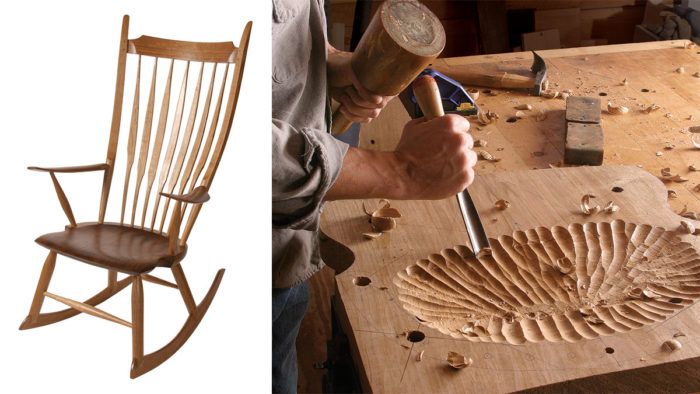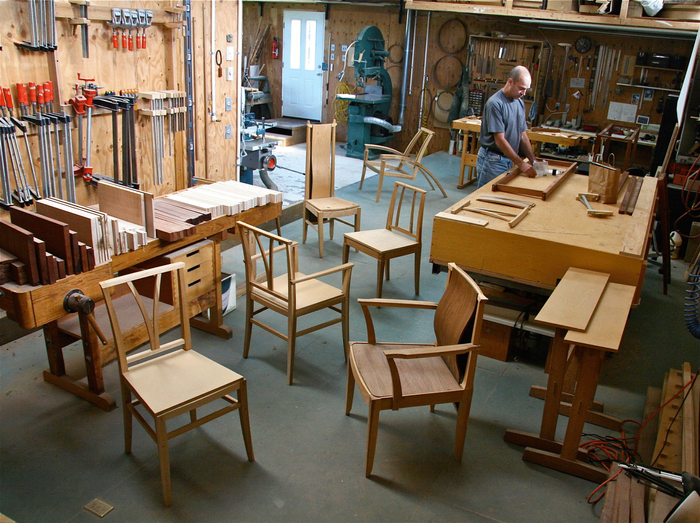Windsor Rocker Without Special Tools: Part 1
Make the seat, drill the angled mortises for the legs and back, and build the base.

Synopsis: This Windsor rocker was inspired in part by the chairs of Sam Maloof, which is why the sculptural quality of the seat extends to the arms, crest, and spindles. Traditional chair-making techniques are updated to make the project more accessible to new chairmakers. The project requires a lathe with at least 18 in. between centers. The parts are steam-bent. This is part one of a two-part series.
I’ve been a professional woodworker for 20 years, but for the last 10, I’ve produced Windsor chairs exclusively, because they are comfortable, durable, beautiful, and fun to make. Rocking chairs are the most popular because they fit a unique niche in modern lives. The human body just isn’t meant to sit in one position for long periods. The easy motion of a rocking chair helps keep blood moving and allows the sitter to shift positions easily while relaxing different muscle groups. I think of it as a subtle exercise machine.
Designing this version of a Windsor rocker, I was inspired by Sam Maloof’s chairs to extend the sculptural quality of the seat to the arms, crest, and spindles. For me, this strengthens the visual unity of the chair, and the fluid lines invite the sitter to relax. I’ve also updated some traditional techniques to make this project more accessible to new chairmakers. You’ll get plenty of opportunity to use hand tools, but don’t worry about having to buy lots of Windsor-chairmaking tools: While specialized tools may speed the process, you can use general shop tools for most tasks. The turnings are all elementary and only require a lathe with at least 18 in. between centers.

In this first of a two-part series, I’ll cover steambending the parts, shaping the seat, and attaching the legs. In FWW #219, I’ll complete the top half, add the rockers, and apply a wipe-on finish.
Windsor chairs traditionally had pine seats, as pine is easily carved, while the rest of the chair was made from a wood such as oak or ash that was strong or steam-bent well. The mismatch in appearance disappeared when the chair was painted. Because this chair will be clear-coated, I chose to make it from white oak with a butternut seat because these two woods take on a similar shade when fumed with ammonia.
For most chairs, I prefer green wood for the bent parts, but this chair can be made successfully using air-dried or even kiln-dried oak and butternut. The bends are gentle enough that the risk of breaking during bending is low.
Select boards that are as straight-grained as possible whether the parts are to be bent or not. Not only is the fiber alignment important for strength, but it also makes shaving the surface of the wood more predictable. To obtain parts with dead-straight grain, rip the board along its grain lines on the bandsaw.
All the white-oak parts, except for the rockers, can be cut from an 8/4 board that is approximately 10 in. wide by 120 in. long or the equivalent square feet. The rockers are cut from 4/4 stock, preferably quartersawn to display the ray fleck.
For the full article, download the PDF below:
From Fine Woodworking #218
To learn how to ream Windsor chair mortises, check out this video
Windsor Rocker Without Special Tools: Part 2.
Get the plan.
Fine Woodworking Recommended Products

Blackwing Pencils

Dividers

Drafting Tools








Log in or create an account to post a comment.
Sign up Log in